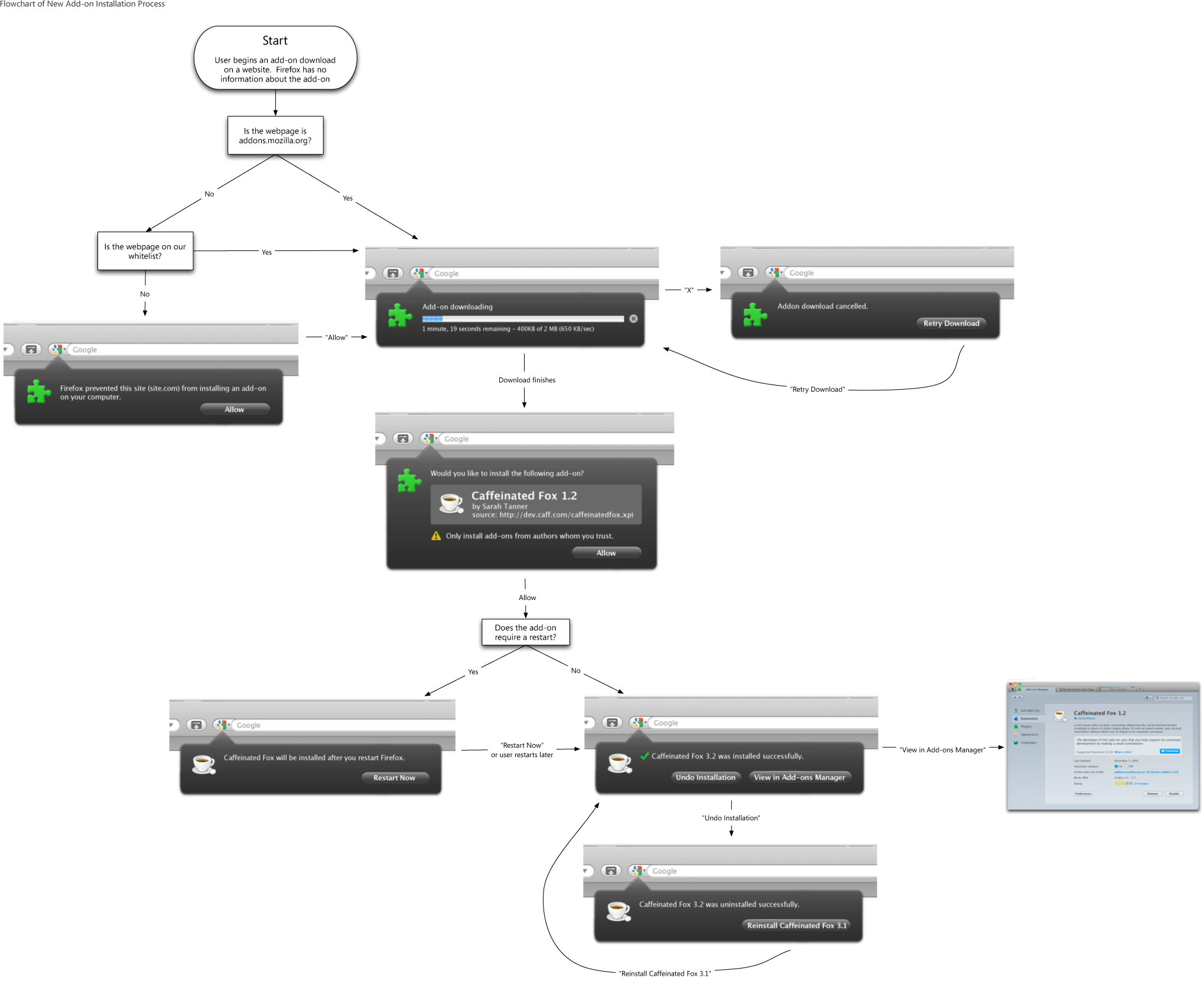I’d like to give a few updates on the continued implementation of Firefox 4’s new add-ons manager. As development work continues, some parts of the manager’s functionality have been adjusted and updated since I last posted mockups. Here are a few highlights of what’s been going on.
Add-on Specific Notifications
Each add-on in the manager could have one of several notifications that only pertain to itself. How can it be made clear when an add-on needs attention or action? Stephen Horlander first experimented with adding subtle coloring and diagonal stripes to each add-on. In the latest nightlies, this method is expanded to give the full range of add-on notifications. Red and yellow signify different levels of potential problems, while grey and green signify when an add-on requires attention or action.
Here’s a mockup of what these notifications would look like in the manager:
In Detail View, where only one add-on is visible, notifications appear at the top of the pane.
Global Add-on Notifications
Notifications that relate to all add-ons now display in the scope bar (bug 566194). The color of global notifications follows the same scheme as notifications for individual add-ons.
Hiding Browser Navigation Widgets
The design of the add-ons manager is enhanced by displaying only relevant parts of the browser chrome and hiding those that don’t relate to the page (such as the URL bar and reload button). Some benefits of doing this include:
- Presenting a minimal, clean UI
- Creating a distinctive in-content page that no other site can mimic – vital because of the far-reaching changes which can be made within in-content pages
- The user only sees actions that they can take. Reload, for instance, is needless on a page that’s locally hosted
- Space in the navigation bar normally used for browsing buttons can be repurposed for widgets useful for in-page content. For instance, the URL bar space can be used in future Firefox versions to present breadcrumb navigation for in-page content.
Progress towards removing browser navigation widgets is being tracked in bug 571970. Unfortunately, this will only work when Firefox is in its default tabs-on-top mode. Removing elements for tabs-on-bottom configurations involves changing the entire theme of Firefox substantially. In order for fast tab switching to remain possible, tabs would need to remained aligned in tabs-on-bottom mode while still preserving the minimal style of in-content pages. This will be the goal for a future version of Firefox.
Downloading Add-ons within the Manager
If you run Firefox nightlies, you may have noticed that if you install an add-on from within the add-ons manager, the installation process happens fully within the manager. By turning the download button into a progress bar, the user’s focus need not move; the relevant information for the download is where the user was looking in order to prompt the download. After the add-on is downloaded, a notification will display on its entry alerting the user that either the installation is complete or that a restart is needed.
A notification will appear over themes and backgrounds when they are fully implemented in the manager. These and other changes that only effect the style of themes and backgrounds will be implemented in future versions of Firefox after 4.
Add-on Installation Process
We’ve also streamlined the process of installing an add-on from a website for Firefox 4. The new design uses Firefox 4’s new arrow notification panels to minimize the number of steps required. When the user begins an add-on installation, the download now begins automatically. For most users, this should only take a second or two. The user then sees the name, author, and source of the add-on, and has the option of allowing the installation of the downloaded add-on. Firefox only obtains this information about add-ons once they have partially downloaded, which is why the full information is presented after the download completes. Though the add-on file has already downloaded at this point, the file is not accessed unless the user allows it to be.
If the add-on does not require Firefox to be restarted, that’s it: the add-on is activated as soon as the user clicks “Allow”. If it requires a restart, the user is notified that a restart is needed and the add-on is activated after the next restart.
If you’d like to try out the new add-ons manager, try running the latest Firefox nightlies. Some of the smaller style changes have not yet landed, but the behavior described here is ready for testing (and bug reports where needed!)










Recent Comments